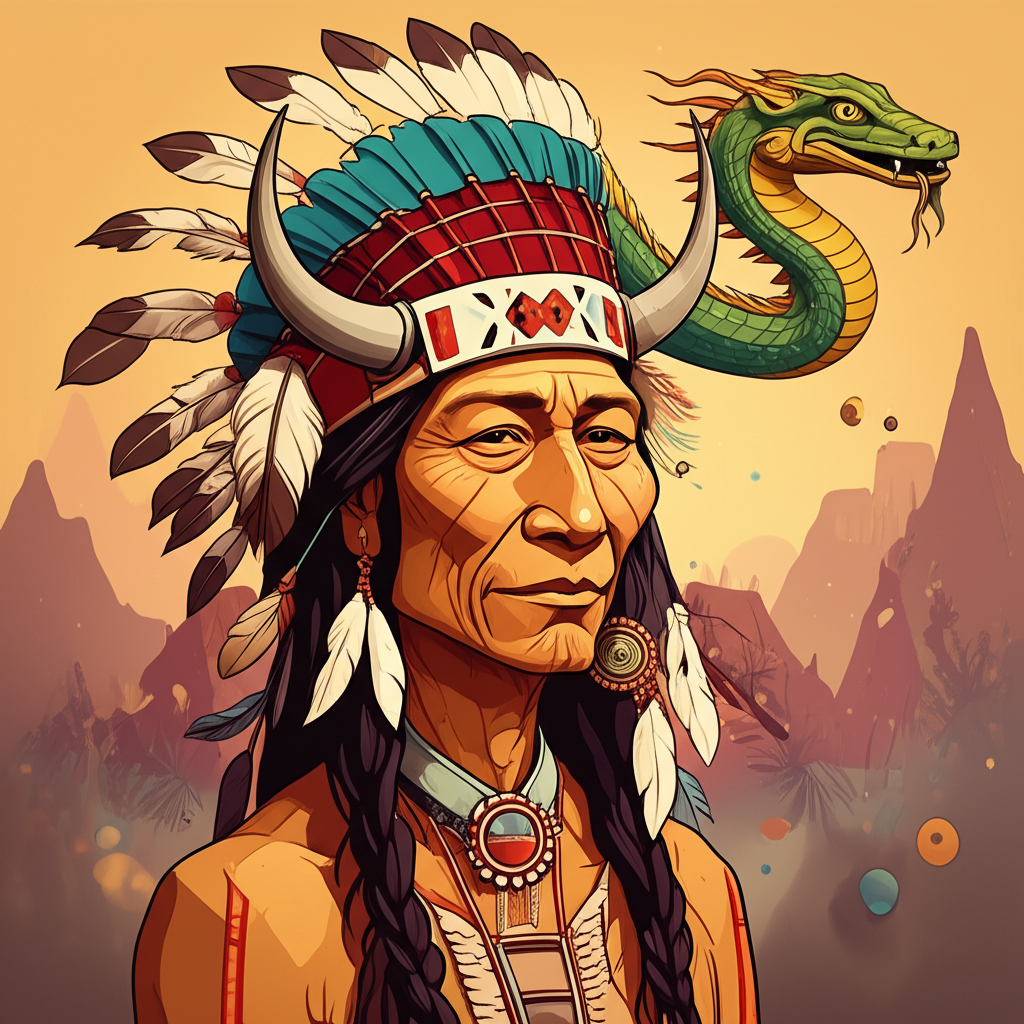
The vast, undulating expanse of the Great Plains, a canvas of endless sky and whispering grasses, has long been a fertile ground for stories. These narratives, woven from the threads of observation, experience, and the profound mysteries of existence, served as the ancient peoples’ way of understanding their world. Among these rich tapestries of folklore, the tales of White Buffalo Calf Woman and the Horned Serpent resonate with a particular power, offering glimpses into a worldview shaped by the raw beauty and formidable forces of nature. It is crucial to remember that these are traditional stories, passed down through generations, not factual accounts to be believed or practiced, but rather cultural artifacts for our educational and historical understanding.
The stories of White Buffalo Calf Woman and the Horned Serpent emerge from the spiritual and cultural landscape of the Indigenous peoples of the North American Great Plains, particularly tribes like the Lakota, Dakota, and Nakota. These cultures flourished for millennia in an environment that demanded resilience, deep connection to the land, and a profound respect for the interconnectedness of all life. The plains, with their dramatic seasonal shifts, the omnipresent buffalo herds that sustained life, and the vast, star-dusted nights, fostered a worldview where the natural and the spiritual realms were not separate but intricately interwoven. Life was often viewed through a lens of balance and reciprocity, where every action had a consequence, and the forces of creation and destruction were both acknowledged and respected. These ancient peoples sought to understand the world around them through symbolic language, and their myths provided frameworks for explaining phenomena, guiding behavior, and preserving their collective memory.
Central to one prominent narrative is the figure of White Buffalo Calf Woman, a being of profound spiritual significance. She is traditionally depicted as a woman of extraordinary beauty and grace, emanating an aura of peace and wisdom. Her arrival is often heralded by the appearance of a white buffalo calf, an omen of great importance in Plains cultures, symbolizing abundance, purity, and the sacred. Her symbolic attributes are not those of divine power to be worshipped, but rather represent the ideals of peace, unity, spiritual renewal, and the sacred connection between humanity and the natural world. She is often associated with the bringing of sacred ceremonies and a deeper understanding of the Creator’s will, embodying a pathway to spiritual harmony.
In stark contrast, yet equally significant in the mythic landscape, is the Horned Serpent. This formidable creature is not a single, unified entity across all Plains traditions, but generally embodies primal forces, often associated with the underworld, water, and sometimes, destructive power. Its symbolic attributes are complex, representing challenges, chaos, the untamed aspects of nature, and the necessary forces of transformation. The horns can symbolize power or a connection to the primal, while the serpentine form speaks to the fluidity of water and the hidden depths of the earth. It is important to understand this creature as a symbolic representation of the challenges and dangers that ancient peoples faced, both external and internal.
The narrative of White Buffalo Calf Woman and the Horned Serpent is often interwoven, highlighting a cosmic struggle or a pivotal moment in the history of these peoples. Imagine, for instance, a time when the people of the Great Plains were experiencing hardship, perhaps a period of scarcity or internal discord. The land itself might have seemed to mirror this distress, with drought or conflict casting long shadows. It is in this context that White Buffalo Calf Woman appears, often described as emerging from the horizon, a radiant presence. She is not a warrior, but a bringer of wisdom and guidance. She may have encountered the formidable Horned Serpent, perhaps a creature whose presence brought fear and disruption, or one that symbolized the very challenges the people were facing.
The story might depict a transformative encounter. White Buffalo Calf Woman, with her gentle yet unwavering spirit, does not necessarily battle the Horned Serpent in a physical sense. Instead, her presence, her teachings, and the sacred gifts she bestows, such as the pipe and the understanding of certain ceremonies, act as a powerful counterpoint to the serpent’s influence. The narrative could describe how her wisdom and the spiritual practices she introduces help to pacify or transform the destructive energies symbolized by the serpent, bringing about a restoration of balance and harmony. The buffalo, often a central symbol of sustenance and life, might also play a role, perhaps their abundance being restored or their sacredness reaffirmed through her teachings. The story is told not as a literal account of divine intervention, but as an imaginative exploration of how spiritual guidance and the adoption of sacred practices could lead to a renewal of community and a deeper connection to the life-giving forces of their world.
The symbolism within these stories is rich and multifaceted. White Buffalo Calf Woman represents peace, unity, compassion, and the sacred feminine principle. Her arrival signifies a time of spiritual awakening and the potential for renewal. The white buffalo calf itself is a powerful omen of good fortune and divine favor. The Horned Serpent, conversely, can symbolize the primal, untamed forces of nature, the challenges that must be overcome for growth, or even the darker aspects of human nature that need to be acknowledged and transformed. The encounter between these figures can be seen as a representation of the eternal struggle between chaos and order, destruction and creation, and the human journey towards spiritual understanding and balance. These myths provided a narrative lens through which to interpret the world, to understand the cycles of life and death, and to find meaning in their existence.
In the modern era, these ancient stories continue to hold relevance, albeit in different contexts. They are studied in literature, anthropology, and cultural studies as vital expressions of Indigenous worldview and heritage. In contemporary Indigenous art, music, and storytelling, the figures of White Buffalo Calf Woman and the Horned Serpent are often reinterpreted, serving as potent symbols of cultural identity, resilience, and the enduring spiritual connection to the land. While these figures are not part of Islamic belief, their presence in cultural narratives highlights the diverse ways humans have sought to understand their place in the universe.
In conclusion, the tales of White Buffalo Calf Woman and the Horned Serpent are evocative narratives originating from the rich cultural heritage of the Great Plains Indigenous peoples. These are traditional stories, imaginative expressions of ancient peoples’ understanding of their world, their environment, and their place within it. As Muslims, we recognize that only Allah (God) is the true Creator and Sustainer of all that exists. These myths, while not a part of our faith, offer a valuable window into the human capacity for storytelling, the enduring power of symbolism, and the diverse ways in which cultures have sought to articulate their deepest questions and aspirations. They remind us of the importance of preserving cultural heritage and appreciating the vast tapestry of human imagination and tradition.





